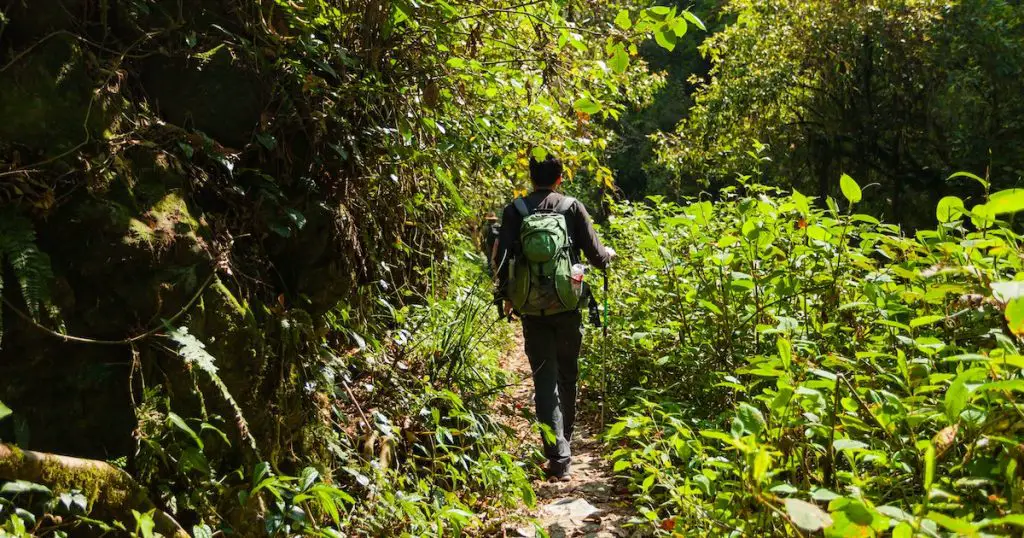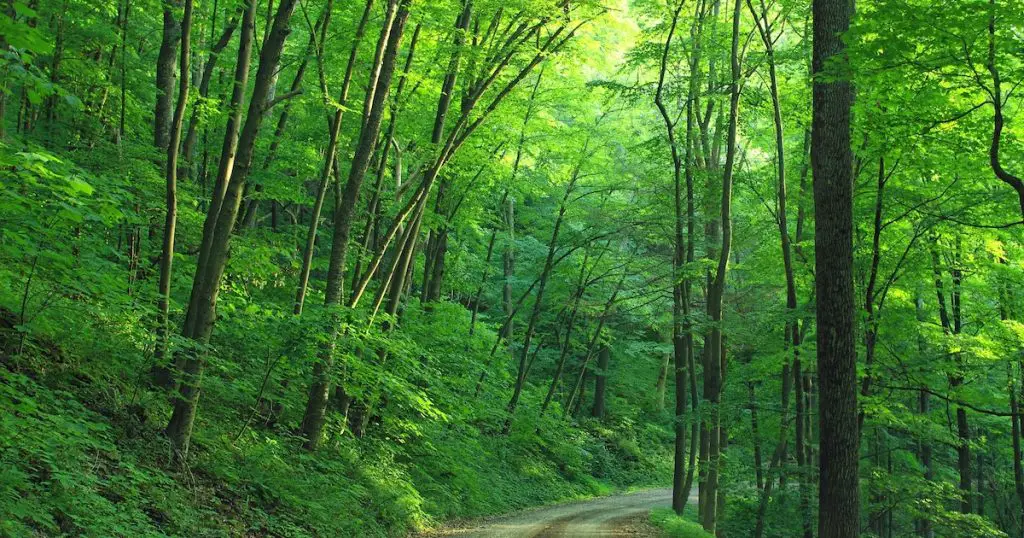The allure of the outdoors is ever-present for avid hikers and nature enthusiasts. Yet, the real essence of an adventure lies off the beaten path. When it comes to Prescott National Forest, this is even more pronounced.

The forest offers a trove of trails that are serene and less frequented, allowing one to experience nature at its most authentic. This article delves into the quiet and less crowded trails in Prescott National Forest, guiding you to places where tranquility meets untamed beauty.
Understanding the Essence of Prescott National Forest
Nestled in the heart of Arizona, Prescott National Forest encompasses a staggering 1.25 million acres. With elevations ranging from 5,000 to 7,000 feet, this biodiverse forest offers more than just a break from city life. It presents a multi-faceted terrain, replete with riparian reserves, woodlands, and grasslands.
The unique positioning of the forest means that its ecosystems vary greatly, offering habitats for a myriad of flora and fauna. With the changing elevations come different vegetation zones, from chaparral and pinion-juniper woodlands to Ponderosa pine forests. This rich diversity ensures every trail in the forest is a new experience.
Benefits of Choosing Less Crowded Trails
Walking down a less-traveled path is an opportunity in itself. The solitude that accompanies such trails allows you to connect deeply with nature. Without the chatter and hustle of other hikers, you can immerse yourself in the symphony of the woods, listening to the chirping of the birds, the rustling of the leaves, and the flow of hidden streams.
Moreover, there are undeniable health benefits to be found on these quiet paths. Studies have shown that solitude in nature can lead to increased mental well-being and reduced stress. The lesser-trodden trails, due to their untouched beauty, also offer a more challenging and engaging workout, boosting physical health.
Opting for such trails also has an environmental advantage. Popular trails often face issues of erosion and litter. By distributing our footprints, we ensure that no single trail bears the brunt of human impact, helping in the conservation efforts of these natural havens.
Northern Trails: Savoring the Cool Breeze
Granite Mountain Wilderness is more than just a hiker’s paradise; it’s a testament to the geological wonders of nature. The rock formations here are stunning, with each trail offering a unique perspective of the landscape. A hike here feels like a journey through time, as you trace the ancient paths of molten rock and witness the ever-evolving topography.
A stone’s throw away lies the Little Granite Mountain Trailhead. Less frequented than its counterparts, this trail promises serenity and panoramic views. Every turn is a visual treat, with the landscape dotted with wildflowers, cacti, and the occasional sighting of local wildlife. Its moderate difficulty level ensures it’s accessible yet challenging, making it a favorite for those looking for a blend of beauty and adventure.
Lastly, the trails off Senator Highway are for those who truly want to venture off the grid. These paths are less documented, offering a raw and authentic hiking experience. Before heading out, ensure you’ve checked the weather and are equipped with a reliable map.
Central Region: The Heart of the Forest
Juniper Mesa Wilderness stands as an untouched beauty in the midst of Prescott National Forest. The juniper trees, with their twisting branches, paint a surreal picture against the backdrop of the azure sky. Here, every step you take feels like a discovery, from the hidden springs to the occasional deer grazing in the distance.
Adjacent to this beauty lies the Horsethief Basin. Drenched in history, the trails here take you on a trip down memory lane, echoing tales of miners and settlers. However, it’s not just history that this place offers. The scenic charm of the basin, with its shimmering streams and lush greenery, ensures a fulfilling hiking experience.
Lastly, the Buckey O’Neill Cabin Route is where history meets tranquility. The cabin, a relic from the past, stands as a testament to the resilience of the pioneers. The surrounding trails, with their wildflowers and gentle slopes, promise a leisurely and enriching hike.
Southern Explorations: Sunshine and Solitude

Cedar Bench Wilderness is a realm of wildflowers and solitude. As you traverse its paths, you are:
- Greeted by a burst of colors from the seasonal flowers
- Enthralled by the calls of the native birds
- Serenaded by the gentle rustling of leaves
It’s a place where time seems to stand still.
Hell’s Hole Trail, on the other hand, is not for the faint-hearted. A challenging trail, it demands stamina and determination. But the rewards are unparalleled. The vantage points from this trail offer some of the most breathtaking views of the forest.
Lastly, Bradshaw Trail is an ode to the old miners. As you navigate its terrain, you are constantly reminded of the tales of yesteryears, of people who came in search of fortune and left behind a legacy.
Safety on Secluded Trails
Being prepared is the key to enjoying any hike, especially when treading on remote paths. Ensure you carry enough water, a first-aid kit, and a map. A GPS device or a reliable hiking app can be a lifesaver in unfamiliar terrains.
Wildlife encounters, while thrilling, demand caution. It’s crucial to remember that you are in their home. Maintaining a safe distance, avoiding feeding, and being aware of mating seasons can prevent unwanted confrontations.
Navigating lesser-known paths comes with its own set of challenges. Staying on the designated trails, marking your entry and exit points, and informing someone about your plans can ensure you have a safe hiking experience.
The Ethical Explorer: Leave No Trace
To ensure that these hidden gems remain pristine for future generations, it’s essential to adopt a sustainable approach to hiking. The Leave No Trace principles provide valuable guidelines. Whether it’s packing out what you pack in or avoiding the creation of new trails, every small effort counts.

Furthermore, it’s crucial to minimize campfire impacts. Opt for camp stoves or use established fire rings. Remember, the forest is a delicate ecosystem, and even a small spark can lead to devastating consequences.
Local Insights: Engaging with Communities
While the forest’s trails are its primary attraction, the neighboring communities are a treasure trove of experiences. Local eateries offer a chance to savor authentic flavors. Before or after your hike, take a moment to explore these hidden culinary gems. They not only provide a gastronomic delight but also offer insights into local traditions and stories.
For those unfamiliar with the forest’s trails, guided tours can be a boon. Local guides, with their vast knowledge and experience, can introduce you to the intricacies of Prescott National Forest that you might otherwise miss.
These guides are often seasoned hikers with years of experience navigating the forest’s trails. By choosing a guided tour, you also support the local economy, ensuring that the communities surrounding the forest benefit directly from its visitors.

Frequently Asked Questions: Quiet and less crowded trails in Prescott National Forest
Are there any permits required for these trails?
While most trails in Prescott National Forest are open to the public, some might require permits, especially for overnight camping. Always check the Prescott National Forest official website for the latest information.
What are the best seasons to explore these trails?
Prescott National Forest offers unique experiences in every season. However, late spring and early fall are often considered ideal due to mild temperatures and blooming flora. Always be wary of monsoon seasons, as some trails can become treacherous.
How do these trails compare in terms of difficulty?
The forest houses a variety of trails ranging from easy to difficult. While trails like the Little Granite Mountain Trailhead offer a moderate hike, Hell’s Hole Trail is more challenging. Always choose a trail that matches your experience and fitness level.
Are there camping spots along these lesser-known trails?
Yes, several secluded trails in Prescott National Forest have designated camping areas. However, ensure you check camping regulations and restrictions, especially in protected wilderness areas.
Conclusion
Prescott National Forest, with its expanse and diversity, is truly a hiker’s paradise. Whether you’re a seasoned explorer looking for solitude or a novice seeking a serene trail, this forest has something for everyone.
Its lesser-traveled paths provide an escape from the mundane, plunging you into an untouched world where nature reigns supreme. Every hike here is a journey, a dance of light and shadow, wind and silence, history and present.
So, lace up those hiking boots, pack your essentials, and step into the quiet and less crowded trails of Prescott National Forest – where every footstep echoes the heartbeats of the wild.



Leave a Comment
You must be logged in to post a comment.